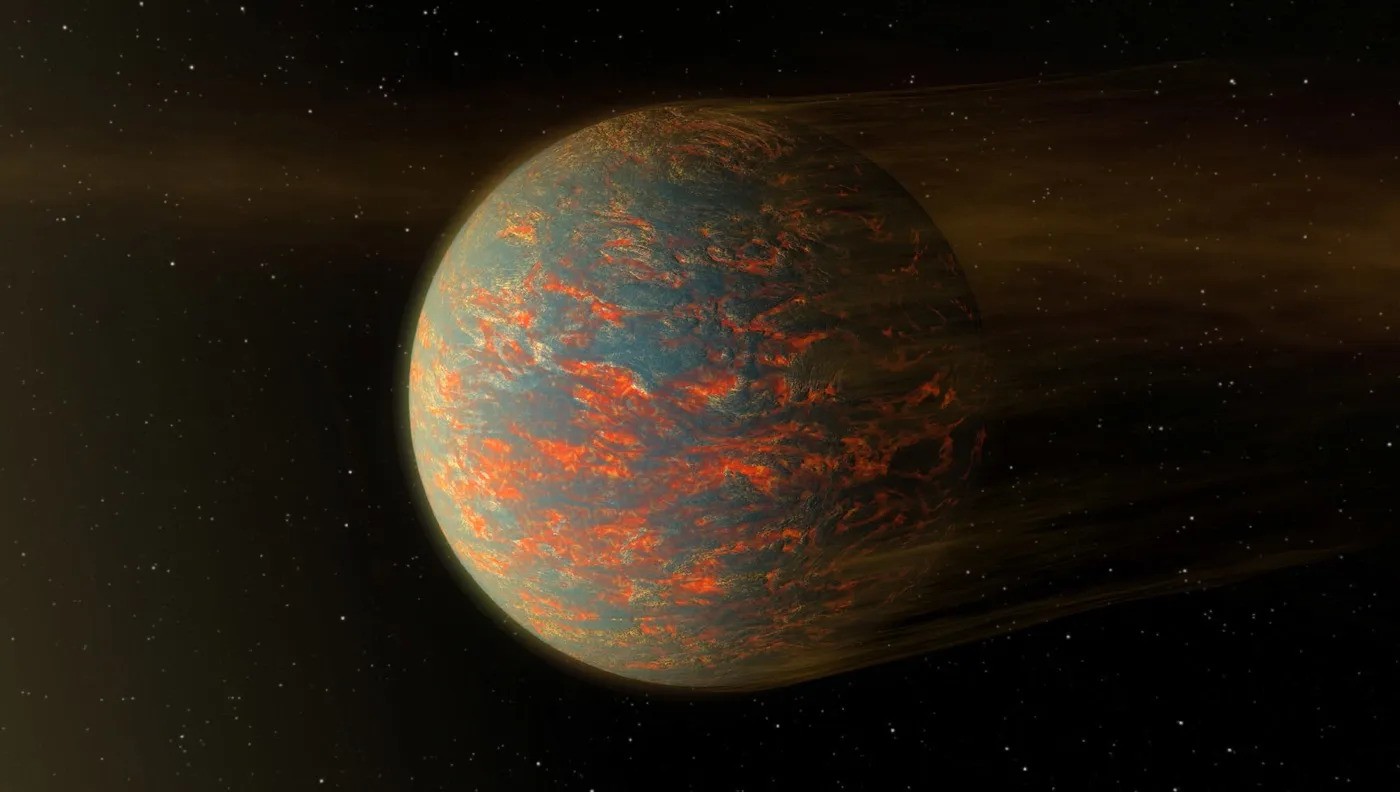Scientists working with the James Webb Space Telescope have studied the planet L98-59 d, which is 34.6 light years away from us. They have found that its atmosphere contains large amounts of sulfur, which contains a variety of compounds.

Exoplanet L98-59 d
Located near the Solar System, exoplanet L98-59 d has a sulfur-rich atmosphere. At least, that’s the conclusion reached by a team of scientists led by Amélie Gressierof of the Space Telescope Science Institute, based in Baltimore. A paper with their findings appeared on August 28 on the arXiv preprint server.
The planet orbits the red dwarf L98-59. It is 34.6 light-years from earth. In addition to the world the astronomers investigated, there are at least three other worlds orbiting around this small star.
L98-59 d is a super-Earth, about 58% larger than our planet. Its mass is 2.31 times that of Earth. This world orbits at a distance of 0.05 a.u. from its star. A year on it lasts only 7.45 Earth days. The surface is heated up to 417 K, i.e. water in a liquid state can no longer exist on it.
Sulfur in an exoplanet’s atmosphere
Scientists were helped by the James Webb Space Telescope to learn more about the atmosphere of L98-59 d. More precisely, NIRSpec on it played a decisive role. It conducted a study of the exoplanet’s atmosphere during its transit, which means passing between us and the star.
These studies have established that the atmosphere of L98-59d contains a lot of sulfur. Hydrogen and helium are also present there, but the main compounds the spectrograph detected are hydrogen sulfide and sulfur dioxide. Of course, it could have been substances contained on the star itself, but the study ruled out that possibility.
The scientists were particularly interested in sulfur dioxide. Its presence indicates photochemical processes on L98-59d. They are usually expected to be found on gas giants, but it is now clear that James Webb can distinguish them on earth-like worlds as well. Which means it can be used to test different models of their evolution.
According to phys.org


